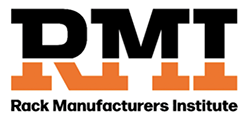The Warehousing Education and Research Council (WERC) DC Measures report helps improve warehousing practices by giving operators a tool to benchmark their own performance against others in the field—and to chart their own course of improvement. This year’s report also explores the application of ESG frameworks in warehousing.
|
Of the hundreds of transformative, game-changing technologies that filled each and every aisle at ProMat, three supply chain and material handling solutions stood out among the 156 entries to MHI’s 11th Annual Innovation Awards competition.
|
When Bill Wappler thinks about the current state of supply chain visibility, he envisions nodes in the supply chain as islands in an archipelago, with nothing but blue water in between. A lot of information is being captured by IoT devices on each island—but a bridge is still needed in order to connect them.
Even as, in general, supply chain software saw an aggressive transition to Cloud deployment in recent years, Warehouse Management Systems (WMS) were a bit late to the Cloud party. There were several reasons for the slow pace of adoption of Cloud WMS.
MODEX, MHI’s premier international supply chain expo, has achieved a finalist distinction in two categories of the Trade Show Executive (TSE) 2023 Gold 100 Grand Awards program. MODEX was nominated for the Best Attendee Acquisition Model, as well as for the Greatest Trade Show of 2022.
|
RMI is pleased to unveil a new logo and fresh branding to coincide with its 65th year of promoting rack safety. Founded in 1958, RMI is an MHI Industry Group and the leading racking industry association. It currently boasts 38 members, who are identified as leaders in the rack manufacturing and material handling industry space.
|
Over the last few years, the definition of last-mile delivery has been expanded to encompass many different methods of getting goods to customers. At the same time, the quality of the fulfillment experience has become increasingly important to consumers, who are now more likely to switch brands when they can’t get purchases delivered when, where and how they want them.
|
Just because you’re getting by with a fixed dimensioning system or a measuring tape today doesn’t mean you’ll be able to sustain your workflow as parcel volumes increase. Mobile dimensioning technology is going to become table stakes for everyone who touches packages along the shipping chain.
Companies are seeing more and more demand from their customers, investors, and authorities to publish and enhance their sustainability data. The SEC’s proposed rules on companies’ climate-related disclosures are expected to be finalized soon. If you are, or have customers that are, a publicly held company you need to prepare now.
|
As with many other sectors, the supply chain of the automotive industry has come under increased scrutiny in recent years. Before the pandemic, “things had sort of been humming along,” said Edgar Faler, senior analyst for the Center for Automotive Research. Then the industry experienced a myriad of fresh challenges associated with the pandemic—from production shutdowns to semiconductor shortages. Those unexpected complications arrived as the industry was experiencing “an enormous transition” to electrification.
|
Carts, dollies, racks, picking cages, and order picker platforms are essential tools for moving products around a facility. There are various types of handles, and each has a specific purpose.
As supply chains have become more complex and handle greater volumes of goods at a faster pace, sensor technology has emerged as one way to improve efficiency, optimize employee skills, address labor challenges and meet customer expectations.
|
In today’s fast-paced and highly competitive business landscape, meeting customer expectations is paramount. As consumers increasingly demand convenience and personalization, a warehouse management system (WMS) can help create seamless customer experiences across various channels.
|
Warehouses play a crucial role in supply chains, serving as a mid-point in the movement of goods. Improving warehouse management and operational efficiency requires accurate data and the use of key performance indicators (KPIs) to monitor and benchmark warehouse performance.
Accenture considers two forms of visibility. Structural visibility through supply chain mapping, classic risk management, network assessment and modeling. Dynamic visibility through monitoring of the supply chain in real time, leveraging analytics capabilities to monitor potential disruptions, and autonomous execution utilizing AI and robotics to automatically adjust operations without human intervention. A recent survey provides insight into how widely these visibility strategies have been implemented.
As more and more businesses adopt AGVs and AMRs, the need to be able to mix and match brands in one growing custom fleet – called interoperability – is becoming increasingly pressing.
Safety is the top concern of a new OSHA program, which aims to direct resources toward workers in high-risk industries, including material handling. OSHA attributed the need for the program to the rapid growth of warehousing and distribution center employees over the past decade and the rising rate of illness and injury.
|
One of the benefits of a diversity, equity and inclusion (DEI) initiative is a company’s ability to leverage that distinction when recruiting, retaining and empowering employees. But, just creating a DEI initiative on paper, printing it on posters and publishing it on a website isn’t enough. It’s imperative to embed DEI within every aspect of a company’s culture and processes, to consistently walk the talk and to continuously look for opportunities to improve.
Many companies are strategically adopted nearshoring, believing that locating products closer to end markets can fortify their supply chains. According to Bloomberg.com: “Total Mexican exports rose 5.8% from a year earlier in May to $52.9 billion, the second-highest reading on record.”
|
|





















